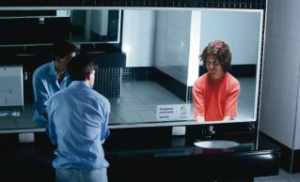

MedFriendly®


Hallucination
A hallucination is a strong sensory perception that one
has of an object or event while awake, when no such
object or event exists. Hallucinations can be heard,
seen, smelled, tasted, or felt. An example of a
hallucination that is heard would be hearing voices
when there is nothing actually present that sounds like
voices.
A visual hallucination.
FEATURED BOOK: Assessing Psychosis: A Clinician's Guide
An example of a hallucination that is seen would be seeing a person in the kitchen when
there is no one actually present in the kitchen. An example of a hallucination that is
smelled would be smelling chicken when there is no odor actually present that smells like
chicken. An example of a hallucination that is tasted would be tasting coffee when there is
nothing actually present that tastes like coffee. An example of a hallucination that is felt
would be feeling spiders crawling on the skin, when there is nothing actually present that
would feel like spiders crawling on the skin.
The difference between a hallucination and an illusion is that an illusion is a
misperception of something in the environment that is similar to, but not identical to, what
is being perceived. An example of an illusion would be misperceiving a random noise
outside as being that of somebody calling out your name. In this case, the random noise
outside (for example, a noise from a loud car radio) may sound similar to someone calling
out your name, and is misperceived. Using this example as a comparison, if there was
not a noise being misperceived in the environment and a person hears somebody call out
their name (when no one is actually doing so), this is a hallucination. The word
"hallucination" comes from the Latin word "alucinor," meaning "to wander in the mind."
"Where Medical Information is Easy to Understand"™















